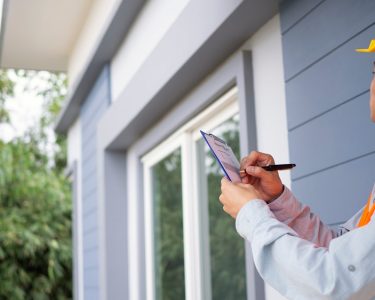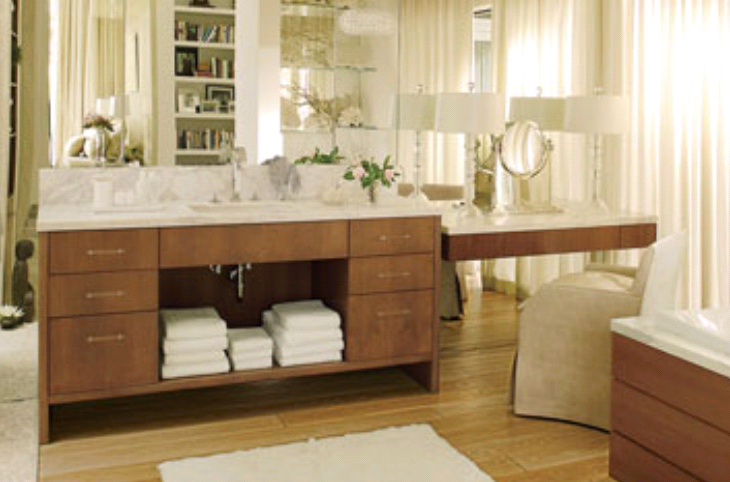In the modern era, the definition of ‘home’ transcends beyond its traditional understanding as merely a place of residence. It embodies a sanctuary of safety, comfort, and well-being. As the world grapples with environmental challenges and health concerns, the emphasis on creating homes that are both safe and sustainable has gained paramount importance. Homeowners, architects, and designers alike are now converging towards a holistic approach that integrates health, environmental consciousness, and innovative design into the very fabric of residential spaces.
A safe and sustainable home environment is not just a luxury; it’s a necessity. It’s about ensuring that the air we breathe is free from toxins, that the materials we use don’t harm the planet, and that the spaces we inhabit support our physical and mental well-being. This perspective is fueled by a growing awareness of the interconnectedness of our actions and their broader impact on the environment and our health.
Furthermore, the concept of sustainability in home design is evolving. It’s no longer just about energy efficiency or reducing carbon footprints. It encompasses a broader spectrum, from sourcing eco-friendly materials and reducing waste to creating spaces that enhance mental well-being and foster community connections.
The role of technology in this transformation cannot be understated. Innovations in construction materials, home automation systems, and renewable energy solutions are paving the way for homes that are not only environmentally friendly but also equipped with the conveniences of modern living.
Moreover, the global shift towards sustainable living is not just a trend driven by societal pressure or regulatory mandates. It’s a reflection of a collective consciousness, a global movement where individuals recognize their role in shaping a better future. This ethos is evident in the choices many homeowners are making, from opting for solar panels and rainwater harvesting systems to integrating green spaces within their homes.
The Silent Threats: Lead and Asbestos
For decades, lead and asbestos were celebrated for their versatility and utility in the construction industry. These materials, once deemed revolutionary, have since been unmasked as silent threats, posing severe health risks to unsuspecting inhabitants. The dangers they present are insidious, often manifesting years after exposure, making awareness and proactive measures crucial.
Lead, a heavy metal once ubiquitous in household paints, plumbing, and even toys, has been linked to a myriad of health issues. In children, even low levels of lead exposure can result in developmental delays, learning difficulties, and behavioral problems. The neurotoxic effects of lead can disrupt the developing nervous system, leading to irreversible damage. Adults aren’t spared either. Chronic exposure can lead to hypertension, fertility issues, and cognitive impairments. The stealthy nature of lead poisoning, with symptoms often being non-specific and subtle, makes it a formidable health challenge.
Asbestos, on the other hand, was hailed for its fire-resistant properties and was extensively used in insulation, roofing, and flooring materials. However, when asbestos-containing materials deteriorate or are disturbed, they release microscopic fibers into the air. When inhaled, these fibers can become lodged in the lungs, leading to diseases like asbestosis, lung cancer, and mesothelioma. The latency period of asbestos-related diseases, often spanning decades, makes early detection and intervention challenging.
Recognizing the gravity of this issue, many businesses offer comprehensive training modules on lead awareness. Their programs emphasize the importance of identifying potential lead sources in homes, especially older structures, and adopting safe practices for lead removal and abatement.
Asbestos, on the other hand, was hailed for its fire-resistant properties and was extensively used in insulation, roofing, and flooring materials. However, when asbestos-containing materials deteriorate or are disturbed, they release microscopic fibers into the air. When inhaled, these fibers can become lodged in the lungs, leading to diseases like asbestosis, lung cancer, and mesothelioma. The latency period of asbestos-related diseases, often spanning decades, makes early detection and intervention challenging.
In conclusion, the silent threats of lead and asbestos underscore the importance of awareness, education, and proactive intervention. While modern construction has largely phased out the use of these hazardous materials, their legacy persists in many older homes and buildings. Organizations also play a pivotal role in equipping homeowners, professionals, and communities with the tools and knowledge to combat these silent threats, ensuring safer and healthier living environments.
Energy-Efficient Installations: More Than Just Savings
In the contemporary architectural landscape, energy efficiency is not merely a buzzword—it’s a commitment to a more sustainable and responsible way of living. As homeowners become increasingly aware of their ecological footprint and the escalating costs of energy, the shift towards energy-efficient installations has gained significant momentum.
Windows and doors, often overlooked in the broader context of home energy consumption, play a crucial role in determining a home’s overall energy efficiency. Traditional installations, while often aesthetically pleasing, may lack the advanced insulation properties that modern technology offers. These inefficiencies can lead to significant heat loss during colder months and heat gain during warmer periods, resulting in an over-reliance on heating and cooling systems. This not only escalates energy bills but also contributes to a larger carbon footprint.
Energy-efficient windows and doors are meticulously designed to combat these challenges. Incorporating advanced materials and cutting-edge technologies, these installations offer unparalleled insulation, ensuring optimal indoor temperatures regardless of external climatic conditions. Multi-pane glass systems, for instance, create insulating air spaces that significantly reduce heat transfer. Additionally, specialized coatings can reflect infrared light, keeping homes cooler in the summer and warmer in the winter.
Beyond thermal insulation, energy-efficient installations also offer a myriad of other benefits. They act as formidable barriers against external pollutants, ensuring that indoor air quality remains pristine. For urban homes, especially those in bustling city centers, these installations provide an added advantage of noise reduction. The enhanced sealing and insulation properties effectively dampen external noise, ensuring tranquility within the home.
Eco-Friendly Renovations: A Breath of Fresh Air
The modern homeowner’s journey towards creating a dream living space is no longer solely about aesthetics and functionality. As the global consciousness shifts towards sustainability and environmental responsibility, eco-friendly renovations for both the interior and exterior painting have emerged as a cornerstone of contemporary home improvement.
The realm of home renovations, particularly painting, has historically been fraught with materials laden with chemicals and volatile organic compounds (VOCs). These compounds, while effective in delivering desired finishes, release toxins into the air over time, compromising indoor air quality and posing health risks to inhabitants. Symptoms like headaches, dizziness, and respiratory irritations are often linked to high VOC concentrations in indoor spaces.
But the benefits of eco-friendly renovations extend beyond just health. They also play a pivotal role in reducing environmental impact. Traditional paints, especially those with high VOC content, contribute to air pollution and smog when their fumes interact with other environmental elements. By opting for eco-friendly alternatives, homeowners can significantly reduce their carbon footprint, contributing to cleaner air and a healthier environment.
Furthermore, the move towards eco-friendly renovations is also about resource conservation. Sustainable materials are often sourced responsibly, ensuring minimal environmental degradation. Whether it’s using paints derived from natural ingredients or opting for recycled or upcycled materials for furnishings and fixtures, every choice made in the renovation process can contribute to a more sustainable future.
Marine Safety: An Extension of Home Safety
For homes nestled near water bodies, the concept of safety extends beyond the confines of four walls. The proximity to lakes, rivers, or the sea introduces unique challenges and considerations, making marine safety an integral component of holistic home safety.
Water, with its serene beauty and calming presence, can be deceptive. The dynamic nature of aquatic environments poses risks ranging from accidental falls and drowning to structural damages from tides and saline corrosion. For homeowners fortunate enough to live by the water, understanding these risks and implementing preventive measures is paramount.
One of the primary concerns in marine construction safety is ensuring secure docking for boats and watercraft. A poorly constructed or maintained dock can lead to accidents, with potential hazards like loose planks, unstable sections, or inadequate lighting. By focusing on robust dock construction by utilizing durable materials and innovative designs, we can ensure stability and longevity. These potential solutions factor in the unique challenges of different water bodies, from the calm stillness of lakes to the unpredictable nature of coastal tides.
Beyond docking, marine safety also encompasses the protection of the home itself. Homes near water bodies are often exposed to higher humidity levels, saline air, and potential flooding risks. Logan Marine advises on the integration of protective barriers, corrosion-resistant materials, and elevated construction designs to safeguard homes from these challenges. Their expertise ensures that homes are not just beautiful vantage points to enjoy water views but are also fortified against the elements.
Additionally, for families with children or pets, safeguarding against accidental falls into the water is crucial. Logan Marine recommends the installation of safety barriers, alarms, and surveillance systems that alert homeowners to any unforeseen incidents. These measures, while simple, can be lifesaving, ensuring that the joys of living by the water are not overshadowed by potential tragedies.
In essence, marine safety is about recognizing the unique challenges of aquatic environments and proactively addressing them. It’s a blend of robust construction, technological solutions, and awareness. With industry leaders championing the charge, homeowners can enjoy the myriad benefits of waterfront living with the assurance that safety, both on land and water, is prioritized.





